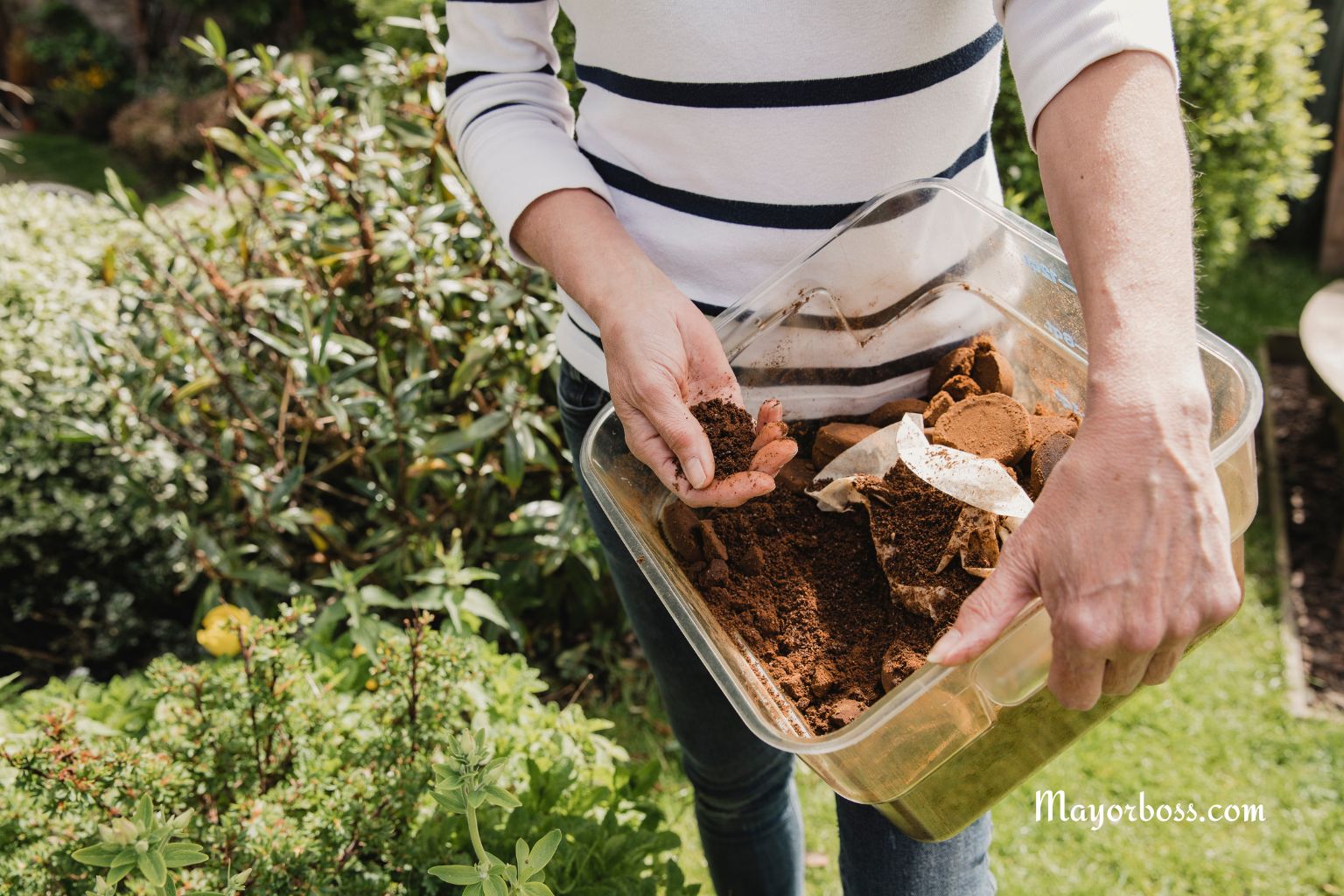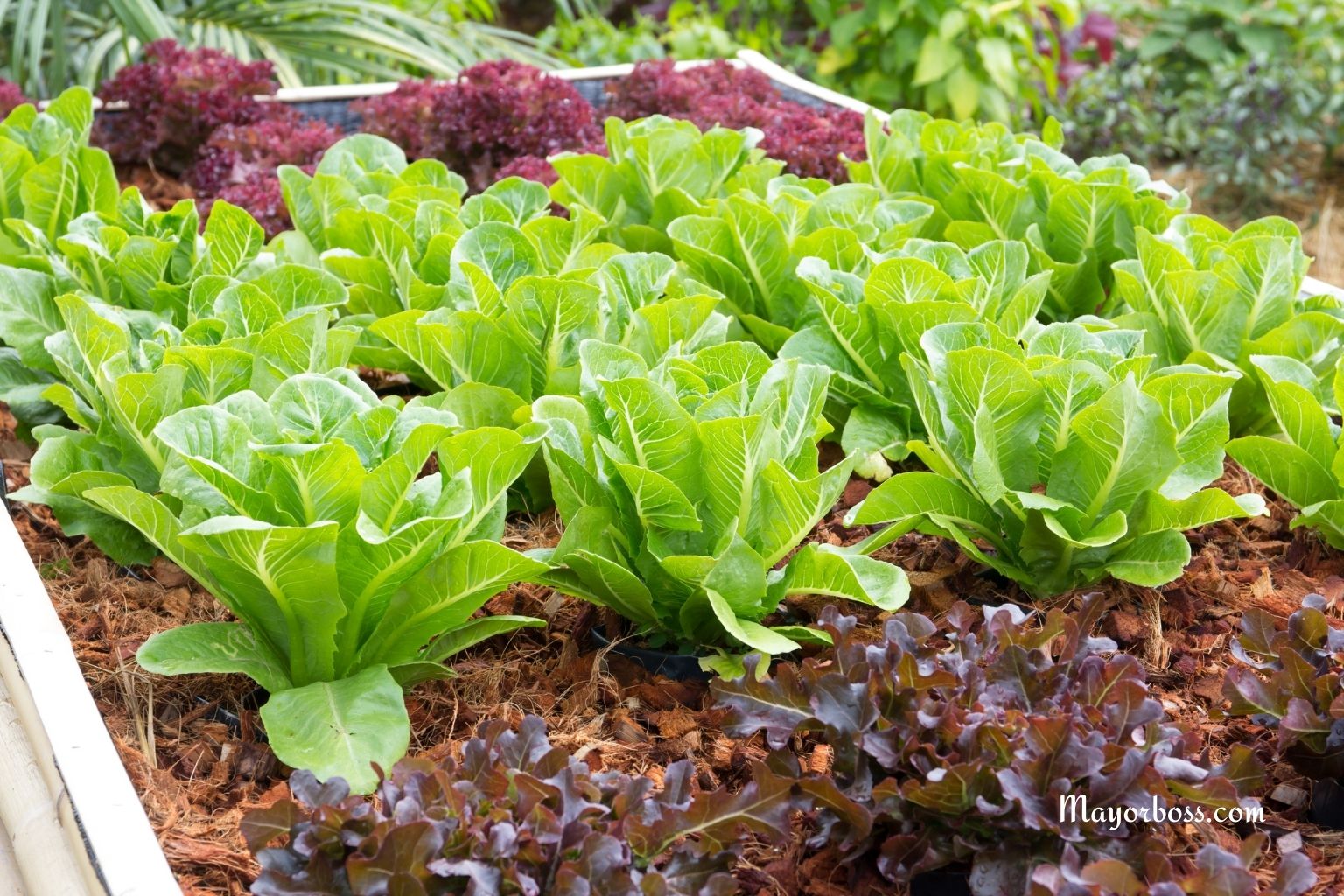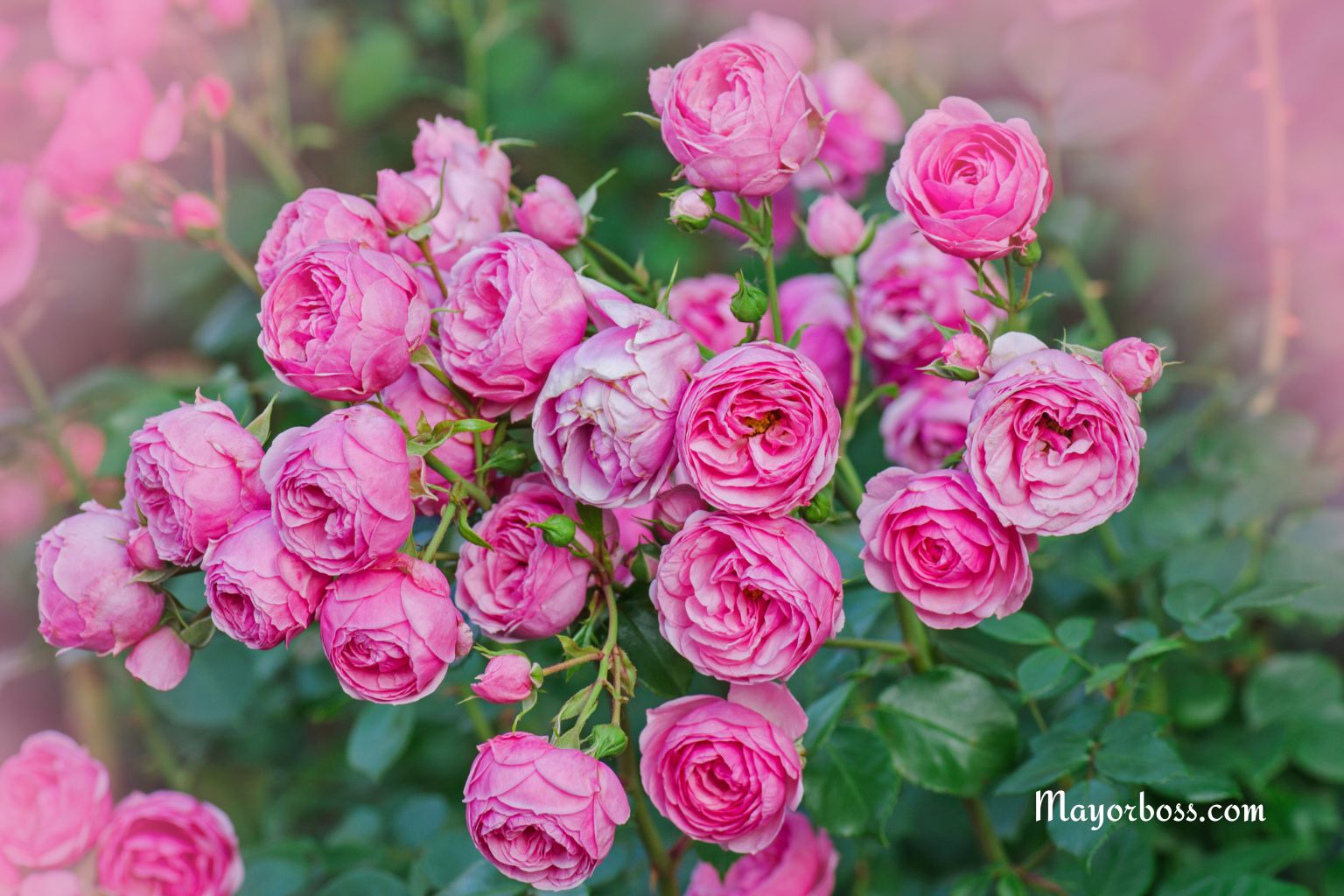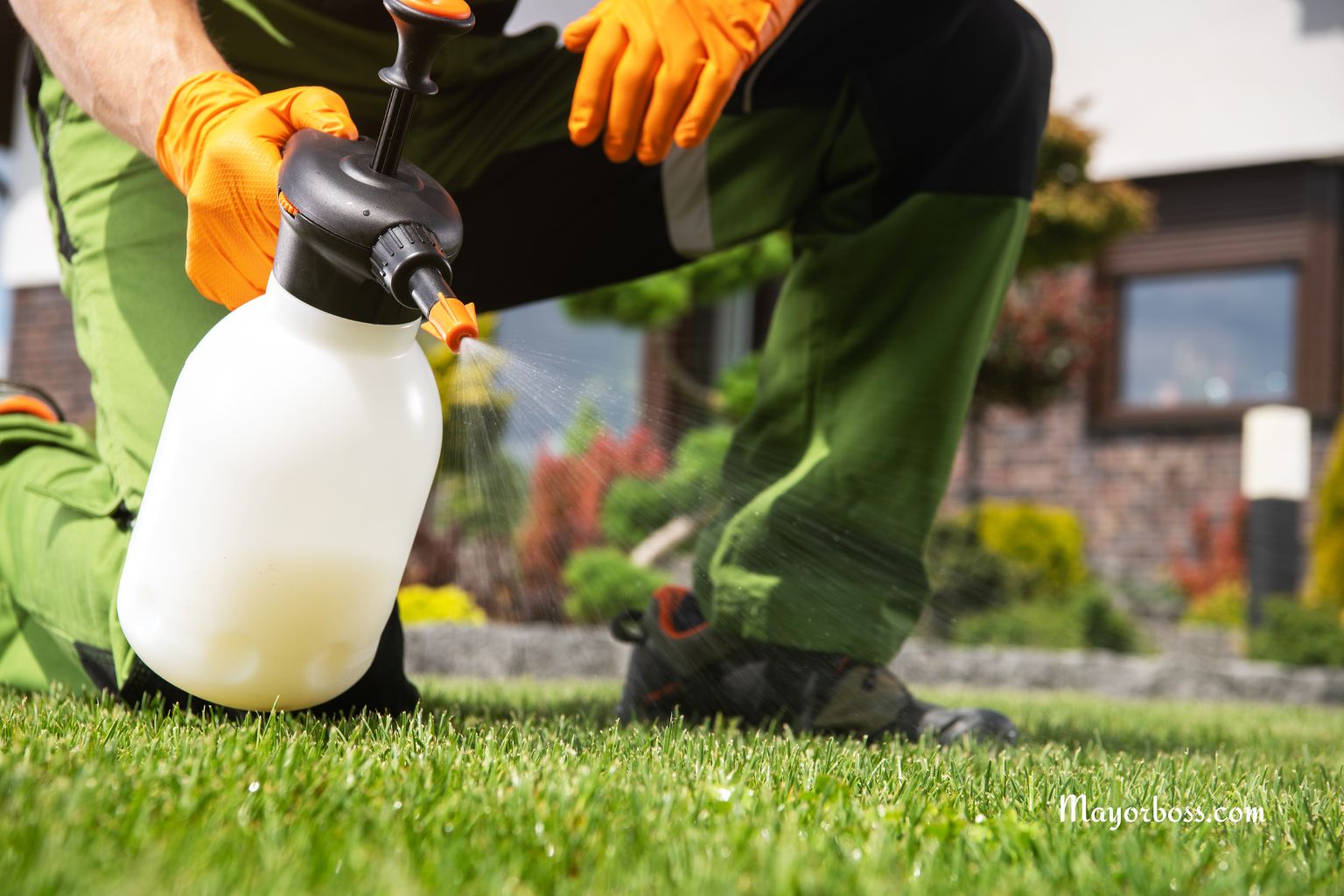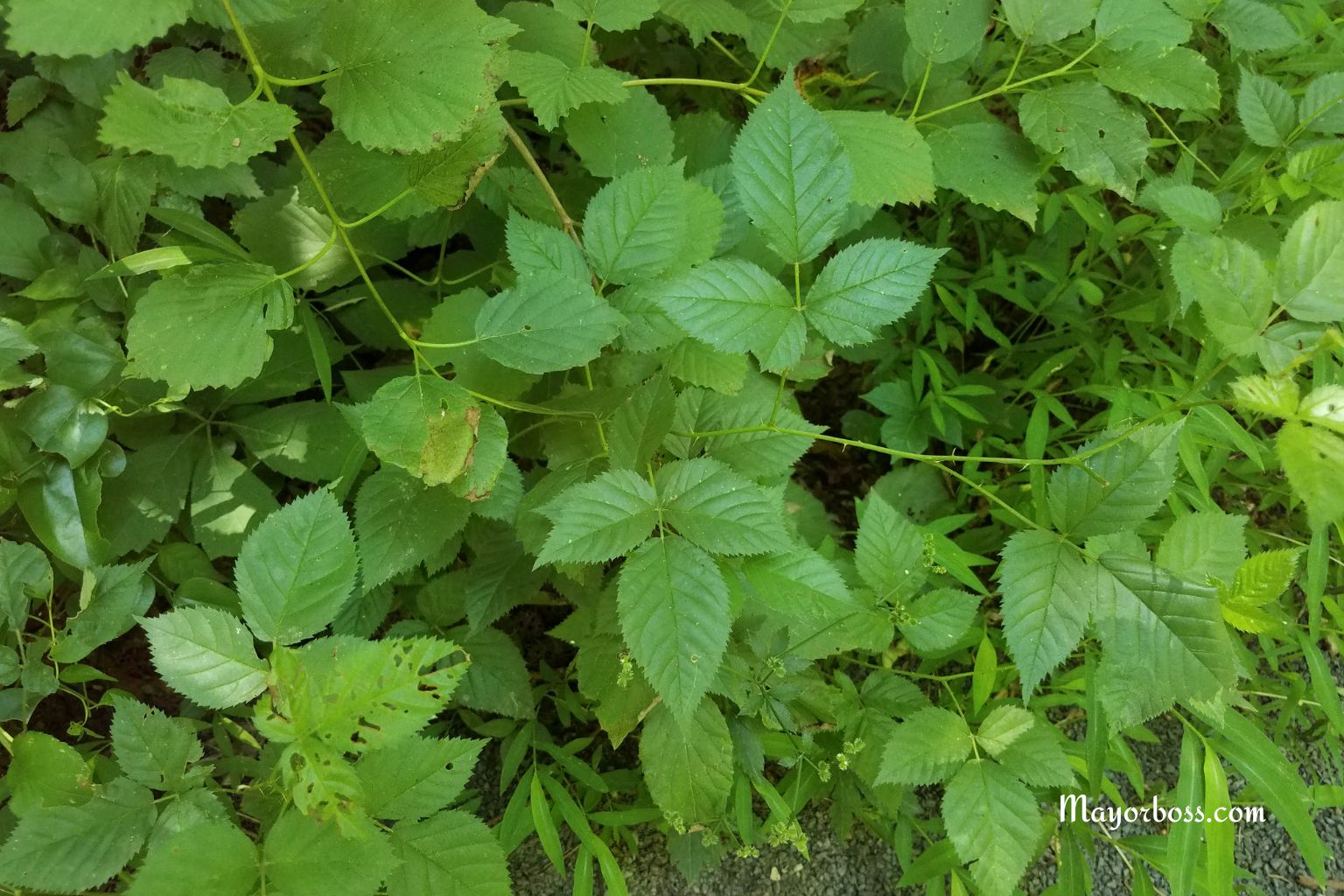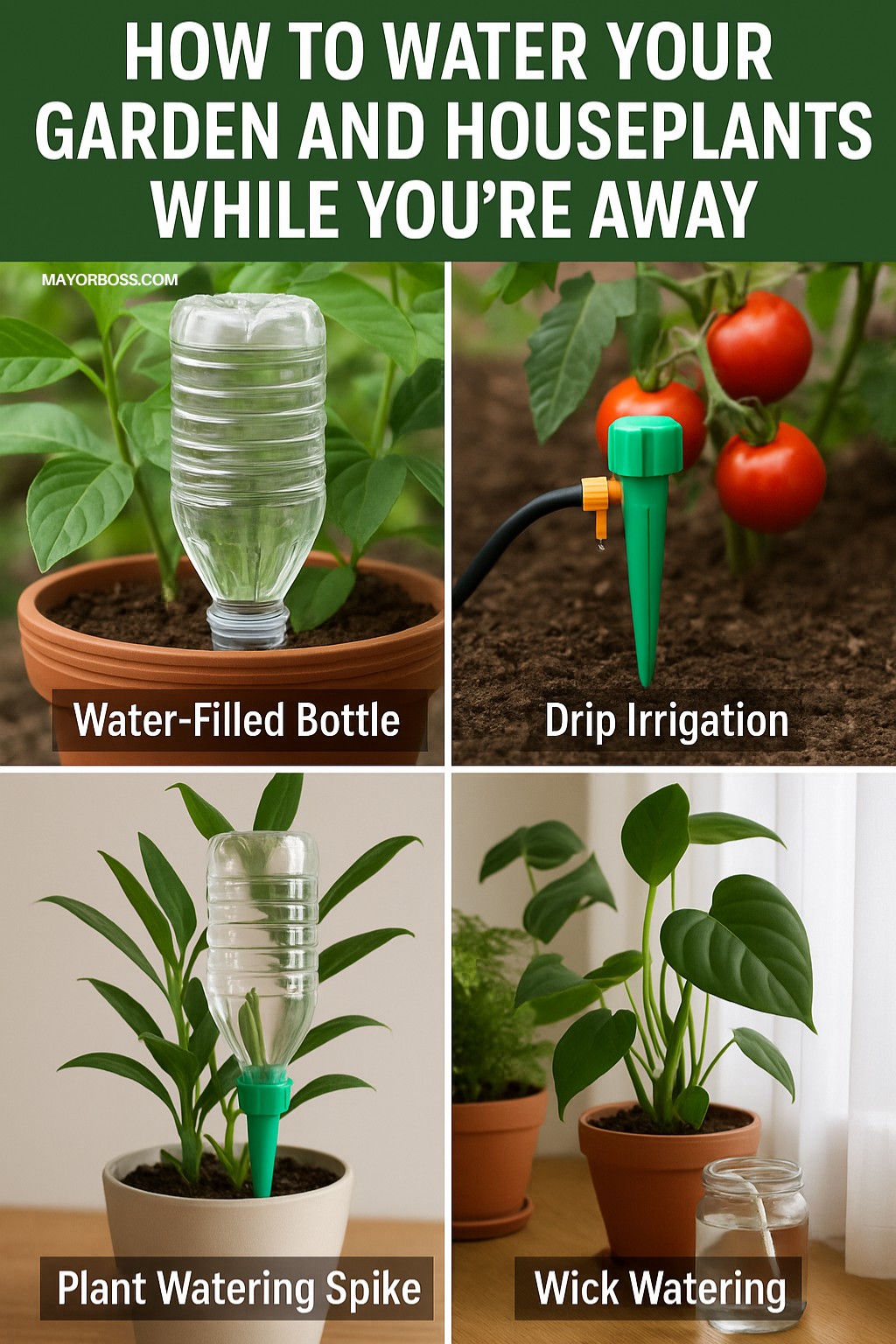How to Fertilize Your Pepper for a Huge Harvest
Want a massive pepper harvest? Here’s exactly how to feed your plants the right way for strong roots, lush leaves, and plenty of fruit.
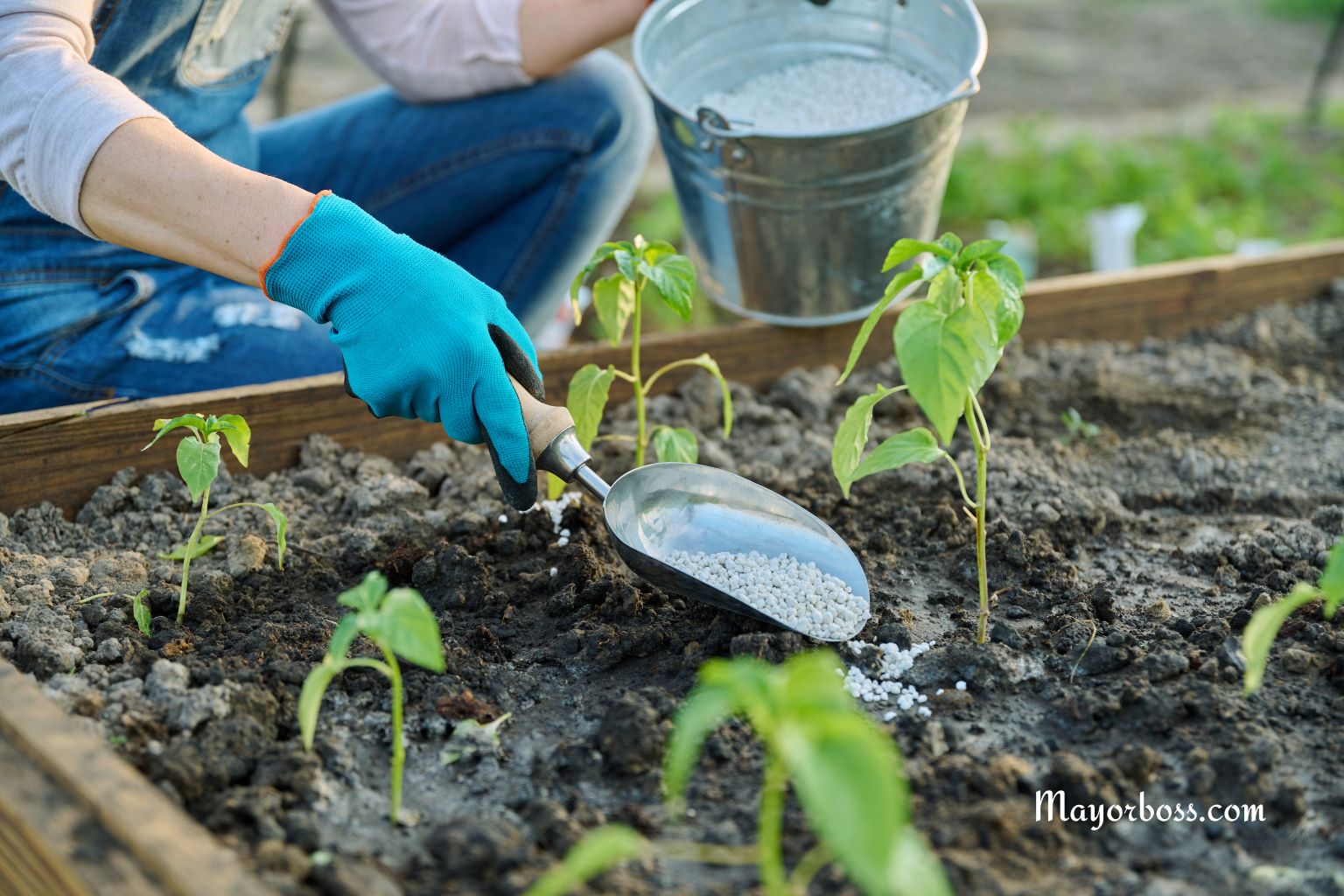
Peppers are heavy feeders. If you want them to grow big, healthy, and loaded with peppers, you can’t just plant and walk away. You need a smart fertilizer plan that supports your peppers through every stage from planting to harvest.
Start With Healthy Soil
Before you even think about fertilizer, make sure your soil is ready. Peppers grow best in loose, rich, well-drained soil. They like slightly acidic to neutral pH (around 6.0–7.0). If your soil is too compact or lacking nutrients, no amount of fertilizer will save your harvest.
Mix compost or aged manure into your garden bed 2–3 weeks before planting. This gives your soil an early boost of nutrients and improves texture. Organic matter also helps the soil hold just the right amount of water.
Choose the Right Fertilizer
Peppers need three main nutrients:
- Nitrogen (N) for leafy growth
- Phosphorus (P) for strong roots and lots of blossoms
- Potassium (K) for healthy fruit and disease resistance
Look for a balanced fertilizer like 10-10-10 for general feeding, or adjust based on your plant’s needs.
If your peppers are green but not flowering, they may have too much nitrogen. In that case, switch to a low-nitrogen, high-phosphorus fertilizer, such as 5-10-10.
For organic gardeners, fish emulsion, compost tea, bone meal (for phosphorus), and wood ash (for potassium) are good choices.1
Fertilize at These Key Times
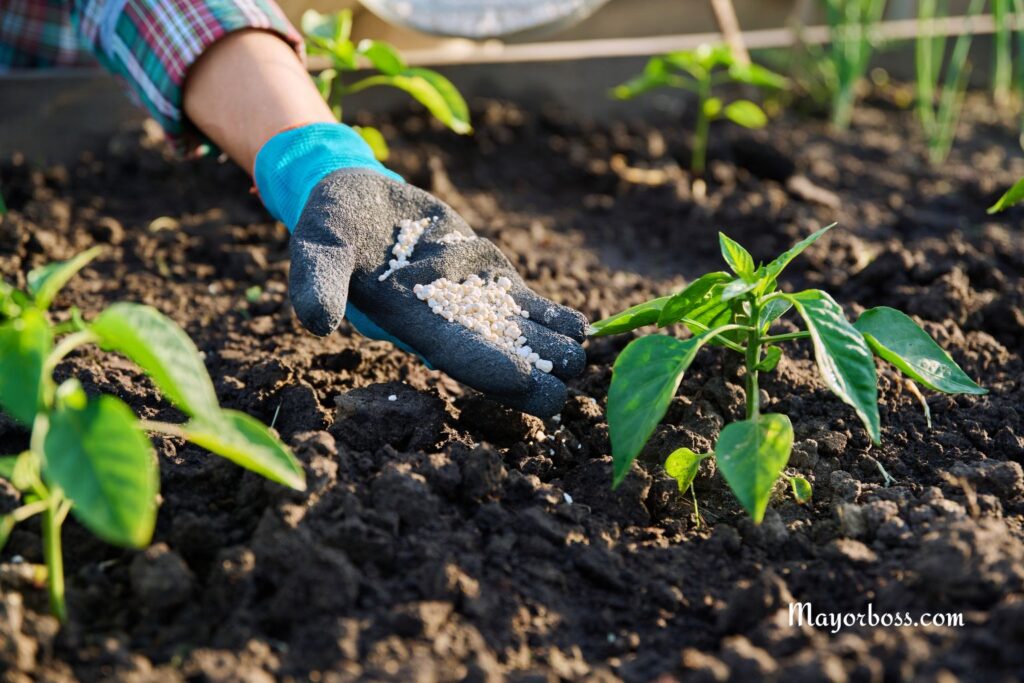
Timing matters. Feed your pepper plants at the right time, and you’ll see results.
1. At Planting
Mix a slow-release fertilizer or compost into the planting hole. Don’t use high-nitrogen fertilizer at this stage—it can cause leggy growth instead of strong roots.
2. After Transplanting (Week 2–3)
Once your pepper plants settle in, start feeding them every 2–3 weeks with a balanced or slightly higher phosphorus fertilizer.
Liquid fertilizers work well because they get to the roots fast.
3. When Flower Buds Appear
This is when the plant starts focusing on reproduction. Switch to a fertilizer with more phosphorus and potassium, like 5-10-10 or 3-5-7. This encourages more blossoms and bigger fruit.
4. During Fruit Set and Growth
Continue feeding every 2–3 weeks while peppers are forming. Potassium is especially important now. It helps fruit grow full and firm.
Stop fertilizing 2 weeks before final harvest to let the plant focus energy on ripening.
Watch for Signs of Trouble
Your plants will tell you if something is off. Learn to read the signs:
- Yellowing leaves: May mean too much water or not enough nitrogen
- No flowers or fruit: Often caused by too much nitrogen
- Blossom end rot (black spots on fruit bottoms): Usually from calcium deficiency or uneven watering
- Slow growth: Likely low nutrients overall
Adjust fertilizer or watering based on what your plant needs.
Don’t Overdo It
More fertilizer doesn’t mean more peppers. In fact, overfeeding can backfire. You may end up with tall, lush plants that barely fruit.
Always follow label instructions. If using compost or organic feed, go slow and steady.
Mulch and Water Well
Fertilizer works best when combined with good watering habits and a layer of mulch.
Peppers like consistent moisture, but not soggy roots. Water deeply once or twice a week, depending on the weather. Mulch helps hold in moisture and keeps weeds down, which means your peppers don’t have to fight for nutrients.
Boost With Epsom Salt (Optional)
Some gardeners swear by Epsom salt for pepper plants. It adds magnesium, which helps plants take in nutrients and create strong stems.
To try it:
- Mix 1 tablespoon of Epsom salt in 1 gallon of water
- Spray on leaves once a month during the growing season
Only use it if your soil lacks magnesium. Otherwise, skip it.
Harvest Often to Keep Them Coming
Once your peppers start producing, pick them regularly. Frequent harvesting tells the plant to keep making more fruit.
If you leave overripe peppers on the vine too long, it slows down production.
FAQs
1. What’s the best fertilizer for pepper plants?
A balanced fertilizer like 10-10-10 works well early on. Once flowering starts, use something higher in phosphorus and potassium, such as 5-10-10.
2. How often should I fertilize my peppers?
Every 2–3 weeks during the growing season. Adjust based on the plant’s growth and condition.
3. Can I use compost instead of fertilizer?
Yes, compost is a great slow-release option. It adds nutrients and improves soil structure, but you may still need extra feeding for heavy-producing peppers.
4. Why are my pepper plants green but not producing fruit?
Too much nitrogen can cause lush leaves but no flowers. Cut back on nitrogen and switch to a bloom-boosting fertilizer.
5. Is it okay to use Miracle-Gro on peppers?
Yes, if used as directed. Just be sure to choose a formula that supports fruiting, not just leaf growth.

